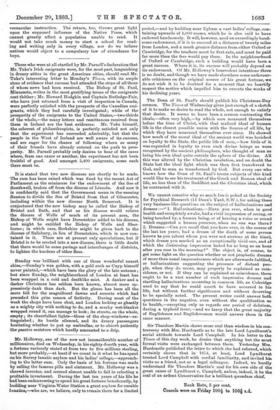The final Report on the Census of Bengal, taken in
1881, gives a remarkable picture of the only province in India where the British Government might possibly be elected by a plebiscite. The Lieutenant-Governorship is nearly as large as France, or 193,000 square miles ; and contains double her population, or 69,500,000 souls. The average density of population is 371.41 to the square mile, and the rate of increase is within a fraction of 11 per 1,000 per annum. Of the total, 45,000,000 are Hindoos, 21,500,000 Mahommedans, 135,000 Christians, and a little above that number Buddhists, while most of the remainder profess various savage creeds. Polygamy, though allowed by law to all but Christians, is in practice extremely rare, the number of persons with more than one wife being only 2 per 1,000. Out of every 1,000 persons, 955 are altogether illiterate, and only 29 can both read and write, the average of illiteracy being of course swelled by the nearly complete ignorance of the women, of whom only 16 in 10,000 can read and write. Natives who cannot read are not necessarily as ignorant as Europeans in the same posi- tion, but the figures strongly support the arguments of those who think that the whole strength of the Education Depart- ment should, for a generation at least, be devoted to primary vernacular instruction. The return, too, throws great light upon the supposed influence of the Native Press, which cannot greatly affect a population unable to read. It would not take much money to start a school for read- ing and writing only in every village, nor do we believe natives would object to a compulsory law of attendance for boys.



































 Previous page
Previous page